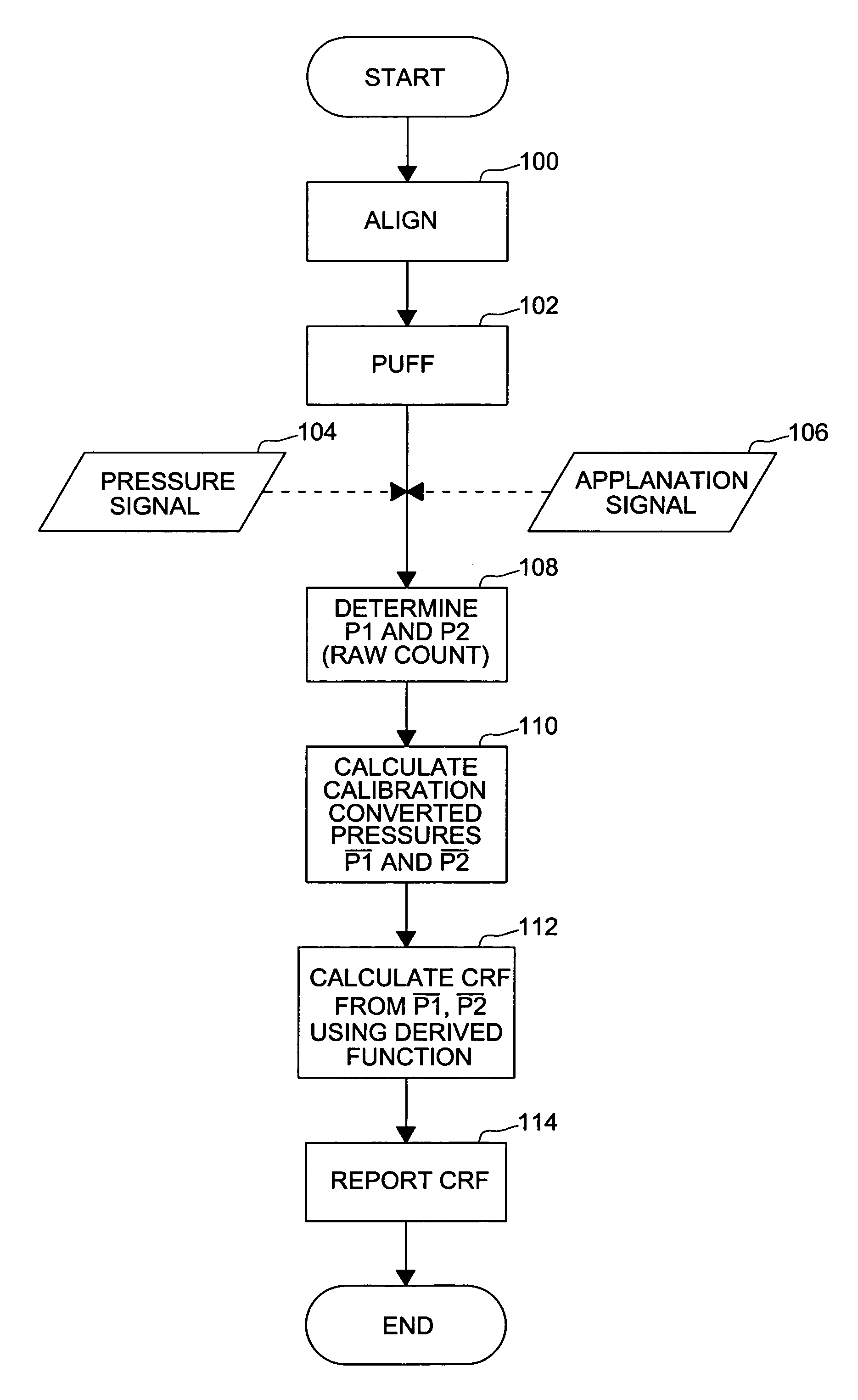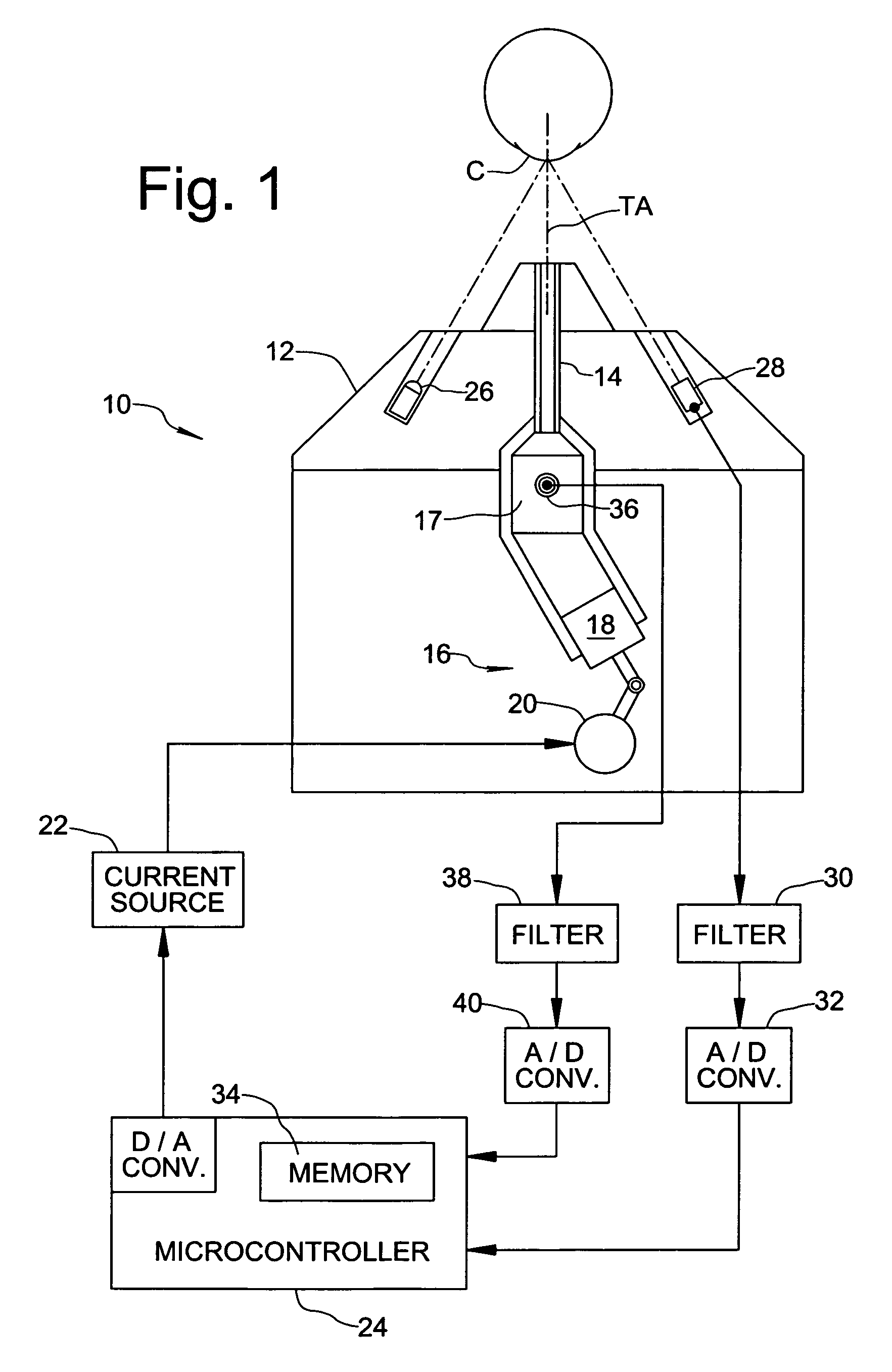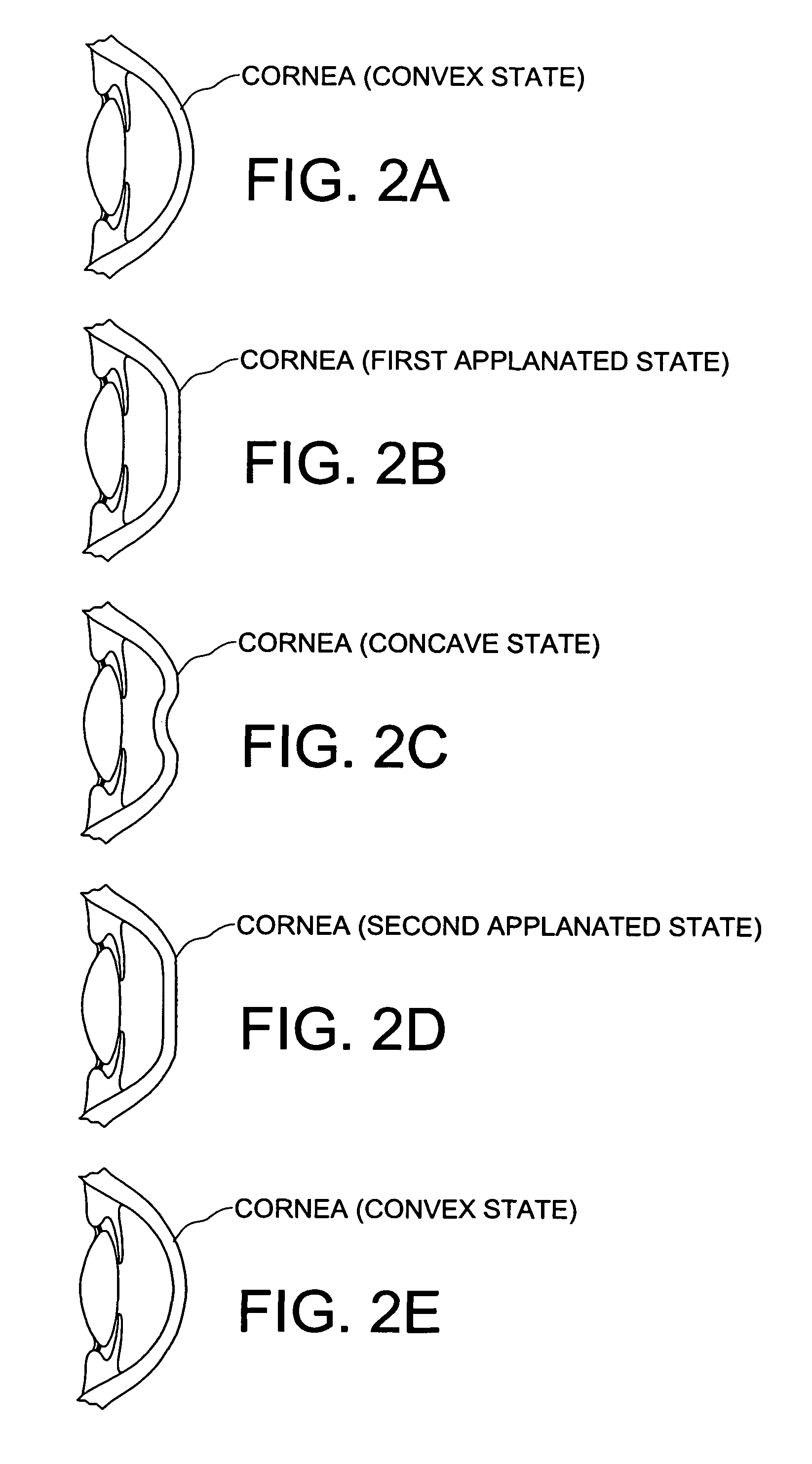Method and apparatus for measuring corneal resistance
a technology of corneal hysteresis and measuring equipment, applied in the field of ophthalmology, can solve the problems of poor to moderate correlation between corneal hysteresis and central nervous system, and achieve the effect of maximizing statistical correlation
- Summary
- Abstract
- Description
- Claims
- Application Information
AI Technical Summary
Benefits of technology
Problems solved by technology
Method used
Image
Examples
Embodiment Construction
[0022]FIG. 1 shows an ophthalmic instrument, namely a non-contact tonometer, 10 in schematic view. A test portion of NCT 10 is depicted as generally including a nosepiece 12 in which a fluid discharge tube 14 is fixed. The fluid discharge tube 14 defines a test axis TA that is aligned with a vertex of cornea C when measurement is carried out. The test portion of NCT 10 further includes a pump mechanism 16 having a plenum chamber 17 in flow communication with an entry end of fluid discharge tube 14, a piston 18 movable to compress fluid within plenum chamber 17, and a drive motor 20 connected to the piston. As will be familiar to persons skilled in the art of non-contact tonometry, the pump mechanism 16 is operable to rapidly increase fluid pressure within plenum chamber 17, thereby generating a fluid pulse that is discharged from an exit end of fluid discharge tube 14 in the direction of cornea C to cause deformation of the cornea. In the depicted embodiment, motor 20 is energized b...
PUM
 Login to View More
Login to View More Abstract
Description
Claims
Application Information
 Login to View More
Login to View More - R&D
- Intellectual Property
- Life Sciences
- Materials
- Tech Scout
- Unparalleled Data Quality
- Higher Quality Content
- 60% Fewer Hallucinations
Browse by: Latest US Patents, China's latest patents, Technical Efficacy Thesaurus, Application Domain, Technology Topic, Popular Technical Reports.
© 2025 PatSnap. All rights reserved.Legal|Privacy policy|Modern Slavery Act Transparency Statement|Sitemap|About US| Contact US: help@patsnap.com



